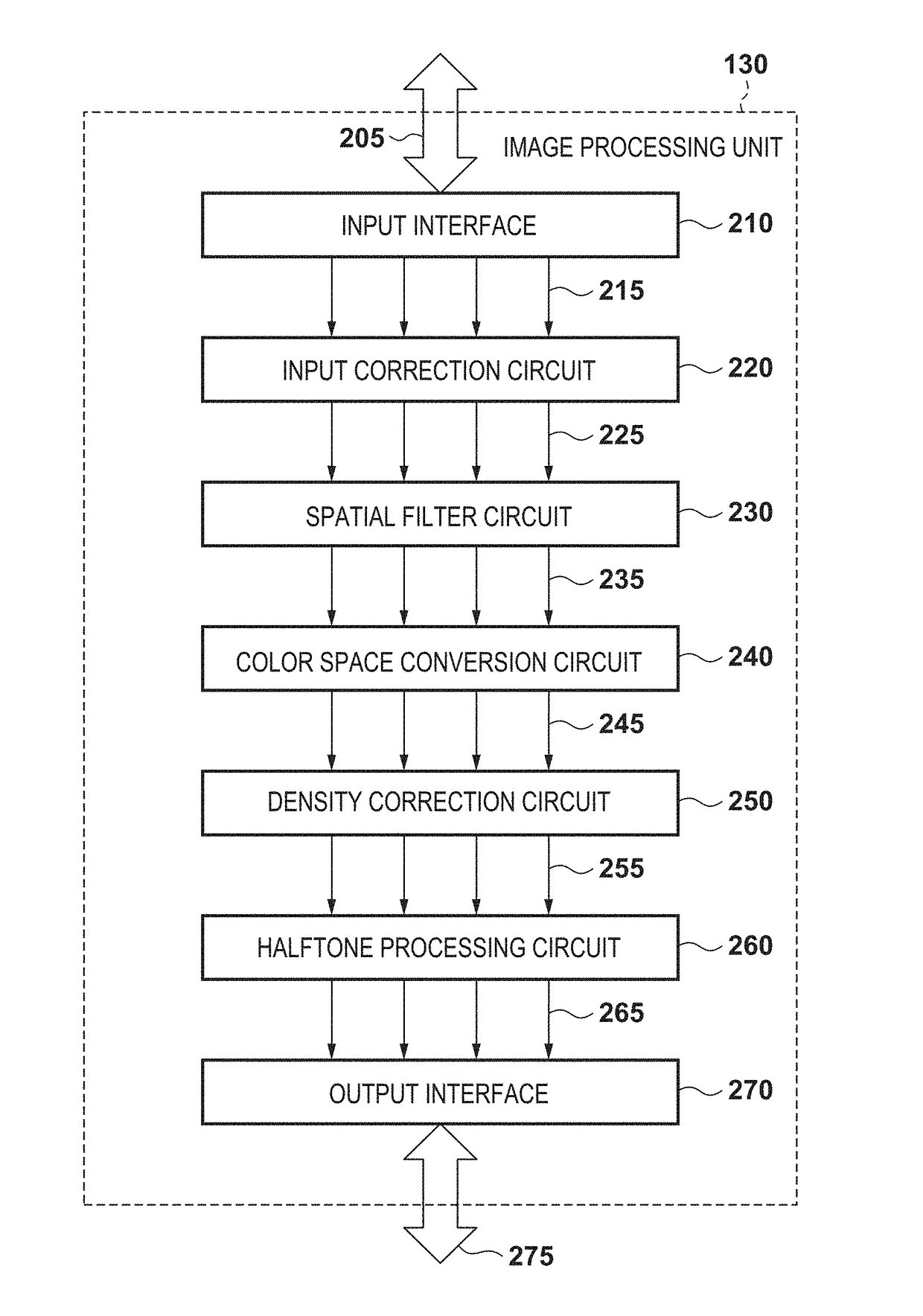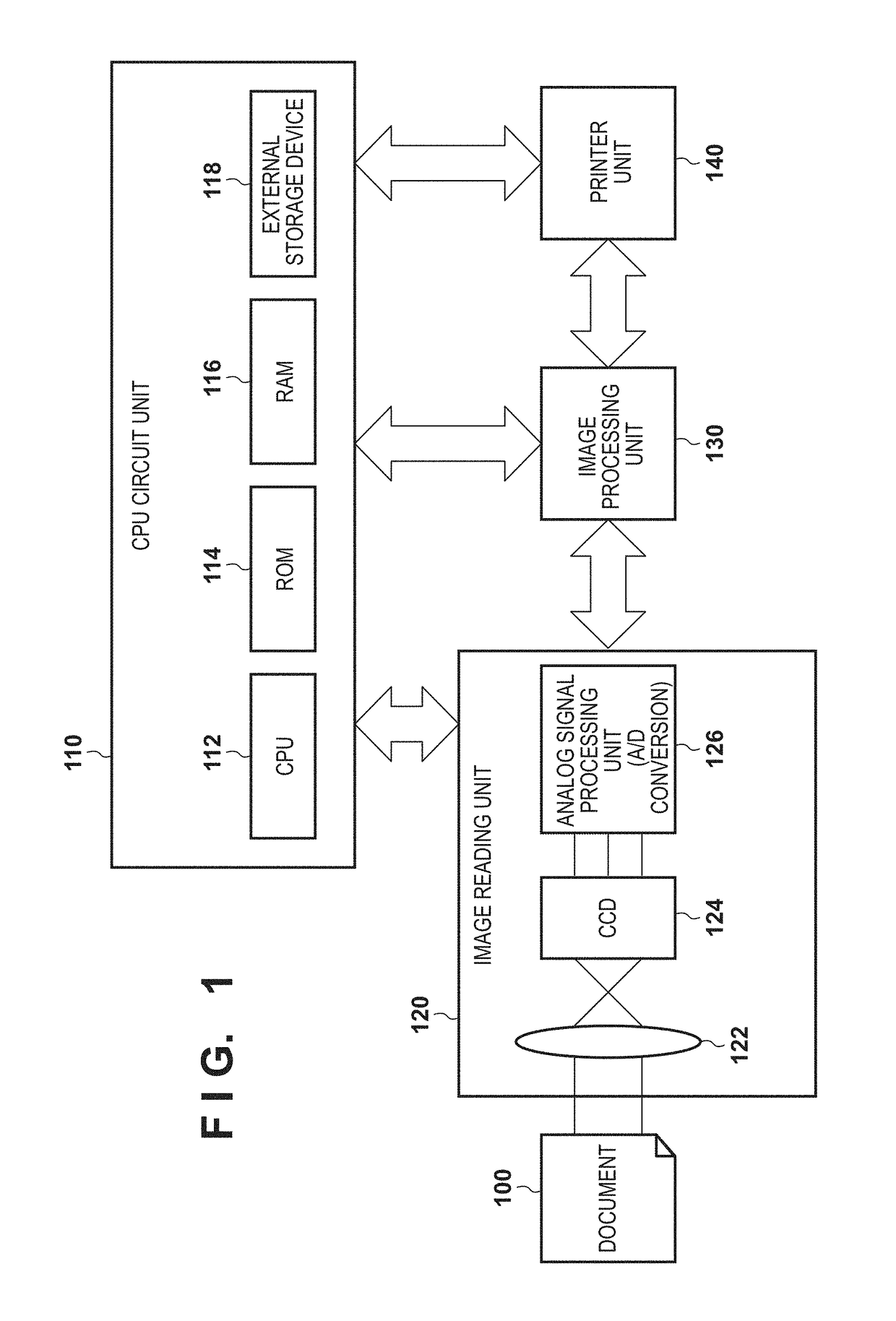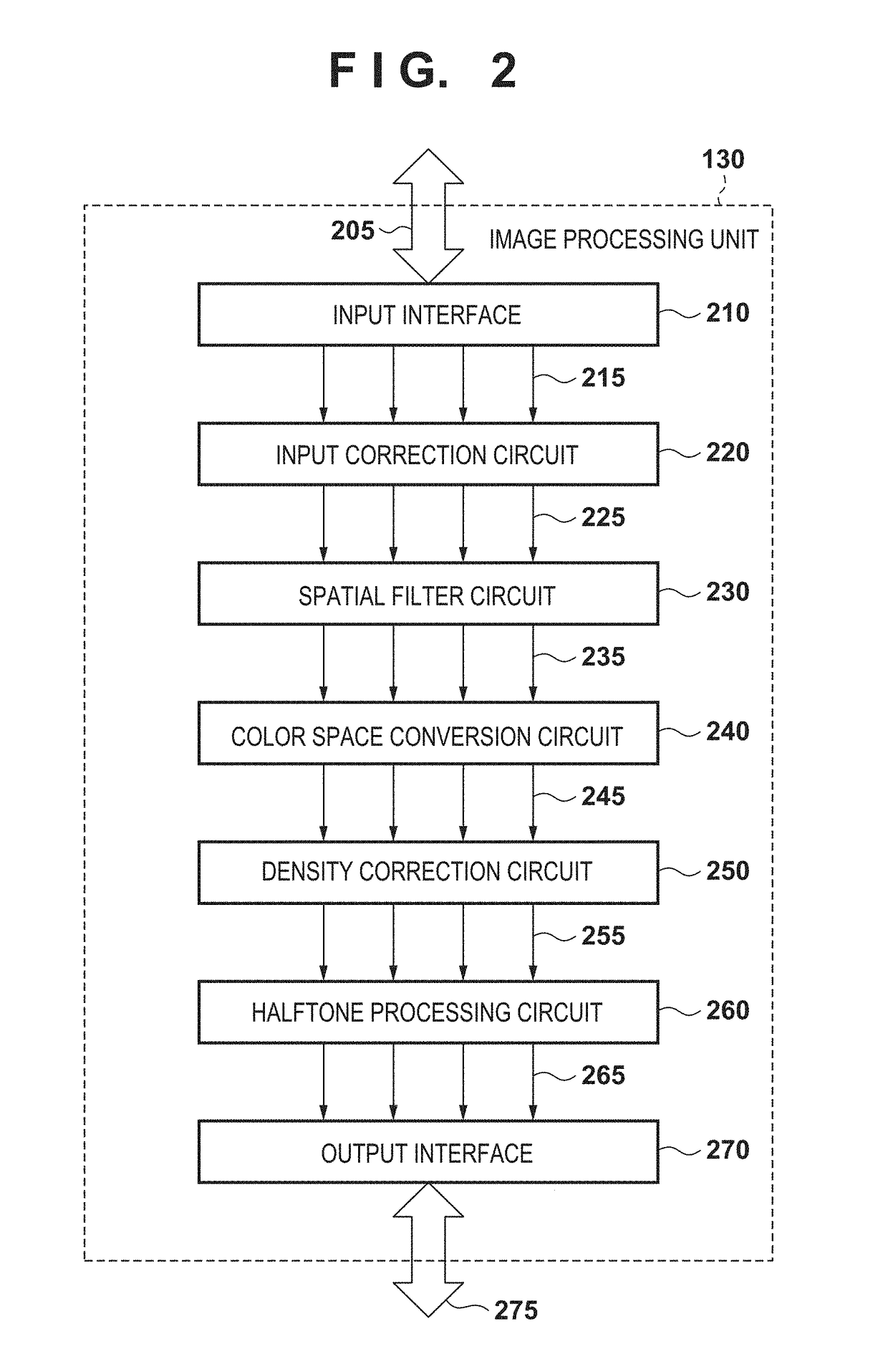Image processing apparatus and control method for applying spatial filters to images
a spatial filter and image processing technology, applied in image enhancement, image analysis, instruments, etc., can solve the problems of increasing the total number of transfer pixels, and unable to obtain sufficient recovery performance, so as to achieve efficient local image processing
- Summary
- Abstract
- Description
- Claims
- Application Information
AI Technical Summary
Benefits of technology
Problems solved by technology
Method used
Image
Examples
first embodiment
[0033]As the first embodiment of an image processing apparatus according to the present invention, a multi-function peripheral (MFP) for reading a document, correcting (compensating for) an image blur caused by a reading optical system, and performing image forming will be exemplified below.
[0034]
[0035]The image processing method described in “BACKGROUND OF THE INVENTION” as the technical premise of the present invention will be explained first.
[0036]Block Processing
[0037]In this method, digital image data is divided into a plurality of block (tile) areas, and local (vicinity) image processing is separately performed. In this technique, to perform local (vicinity) image processing without any gap between the block areas, each block area is made to partially overlap an adjacent block area at the boundary. This can define a memory capacity by the size of each block (tile) area, thereby saving the memory capacity. Assume, for example, that A4-size digital image data (5,000 pixels in th...
second embodiment
[0093]The second embodiment will describe another method of thinning out the reference pixels of a spatial filter. That is, although the reference pixels are thinned out for every other row in the first embodiment, the thinning out method is not limited to this.
[0094]Note that in Examples 1 to 4 to be described below, the size of a reference area is set to a 5-by-5 pixel square (a width fw=5 and a height fh=5), similarly to the conventional band processing (FIG. 3). An equal delay memory capacity is set.
example 1 (
Column Thinning Out)
[0095]FIG. 8 is a view for explaining spatial filter processing according to the second embodiment. In this example, as shown in 800a, a reference area of a 5-by-5 pixel square is thinned out for every other column. In this case, processing for one band area is divided into two processes, that is, processing for pixels of even-numbered columns and processing for pixels of odd-numbered columns, as shown in 800b and 800c. Note that 800b and 800c each show processing for a band area 301 as an example. However, the same processing method is used for the remaining band areas.
[0096]In the example of FIG. 8, as a result of dividing the processing into the two processes, the band area has a height Bdh of 16 pixels, which is twice that in the conventional processing. Therefore, as shown in 800d, an increasing rate r of the total number of transfer pixels is about 1.33. As compared with the conventional band processing shown in 300d, the increasing rate r of the total numb...
PUM
 Login to View More
Login to View More Abstract
Description
Claims
Application Information
 Login to View More
Login to View More - R&D
- Intellectual Property
- Life Sciences
- Materials
- Tech Scout
- Unparalleled Data Quality
- Higher Quality Content
- 60% Fewer Hallucinations
Browse by: Latest US Patents, China's latest patents, Technical Efficacy Thesaurus, Application Domain, Technology Topic, Popular Technical Reports.
© 2025 PatSnap. All rights reserved.Legal|Privacy policy|Modern Slavery Act Transparency Statement|Sitemap|About US| Contact US: help@patsnap.com



